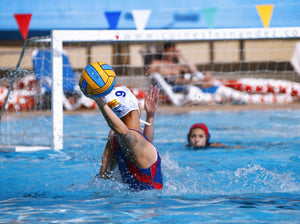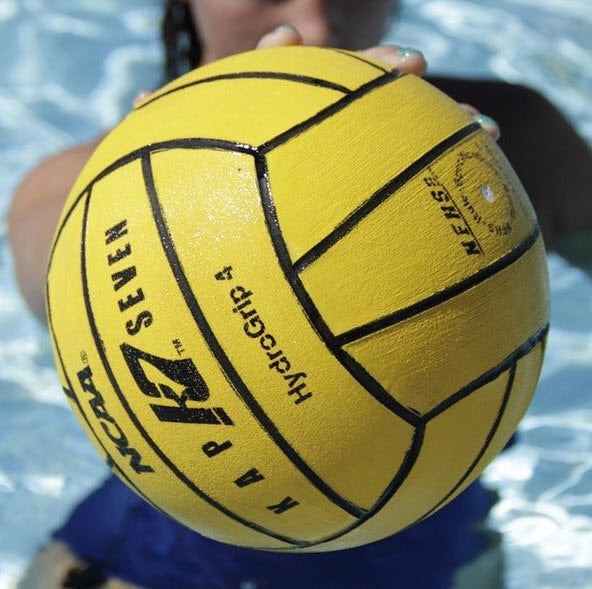How to Make a Leading Pass in Water Polo
 A leading pass is just what it sounds like: A pass that drops the ball in front of a teammate as they are swimming. Leading passes are used on counterattacks, breakaways, or drives, and because the recipient can't see the ball coming, they require perfect placement. Too close and the ball will hit your teammate in the shoulder or the head; too far away and a player from the opposing team or even the goalkeeper will be able to steal it.
A leading pass is just what it sounds like: A pass that drops the ball in front of a teammate as they are swimming. Leading passes are used on counterattacks, breakaways, or drives, and because the recipient can't see the ball coming, they require perfect placement. Too close and the ball will hit your teammate in the shoulder or the head; too far away and a player from the opposing team or even the goalkeeper will be able to steal it.
Leading passes are useful at many different points during a game, and being able to place the ball accurately will help your team take full advantage of a breakaway. Making leading passes is a skill that field players and goalkeepers alike should master. This guide will walk you through how to make a good leading pass, as well as some drills that will help you develop your skills.
How to Make a Leading Pass
A leading pass should drop two to three feet in front of a swimming player. Because leading passes come from behind, they need to arc. That allows the ball to clear your teammate (and any defenders behind them) and land without bouncing or skipping off the surface of the water. The ball will ideally land right in front of them; too far to one side and they may lose any advantage they had while going to retrieve it.
Make a leading pass using the same technique you would for any other long-distance pass: Tread high, get your elbow out of the water, and rotate your entire body as you throw. Use your fingertips to control the spin and placement of the ball as you release it.
How to Practice Leading Passes
There are a few good drills that help develop strong leading passes. The drills described below start out with short, easy passes and progress to ones that more closely mimic the type of leading passes required in a game.
Lead a Partner down the Pool
Get a partner and a ball. Allow your partner to take off swimming toward the other end of the pool. When they are several feet from you, throw them a leading pass. As soon as the ball lands in front of them they should turn around and pass it back to you, then continue swimming. Continue making leading passes until your partner has reached the other end. Swim with the ball to your partner and switch roles on the way back.
For young or beginning players, making an accurate leading pass all the way across the pool is a challenge. During this drill, passers can start swimming toward their partner as soon as they've passed the ball to decrease the distance for the next pass.
Leading Passes with a Defender
This drill mimics a breakaway situation in a game. Starting at one end of the pool near the cage, a player should take off for the other end. A defender should be following them, just one to two strokes behind. The driver should zigzag as needed to keep the defender on their back and aim for the middle of the cage as much as possible. There will also be a goalkeeper in each cage; one to make the leading pass, and the other to block the shot of the driver.
Once they're close enough to the cage (somewhere after the halfway point and before the five-meter line), they should receive a leading pass. If it's too far in front of them, the goalkeeper should come out and steal the ball. If the ball lands too close, their defender should do their best to gain possession. If the pass is perfect, the player can continue driving in for a wet shot.
Practice Counterattacks
In this drill, passers can be field players or the goalkeeper. Three players should line up on the five-meter line in the flat and point positions. The players should swim down the pool and at the half, the two flats should wing out. After they wing out, the passer sends a leading pass to one of them. That flat can in turn make a leading pass to the still-driving player from the point position.
Practice Perfection
Because a leading pass comes from behind, it has to be more precise than other passes. Your teammate won't see the ball coming and won't know where it is going to land, so placement crucial. A good leading pass is definitely worth practicing since it can mean the difference between a score and a stolen ball.



